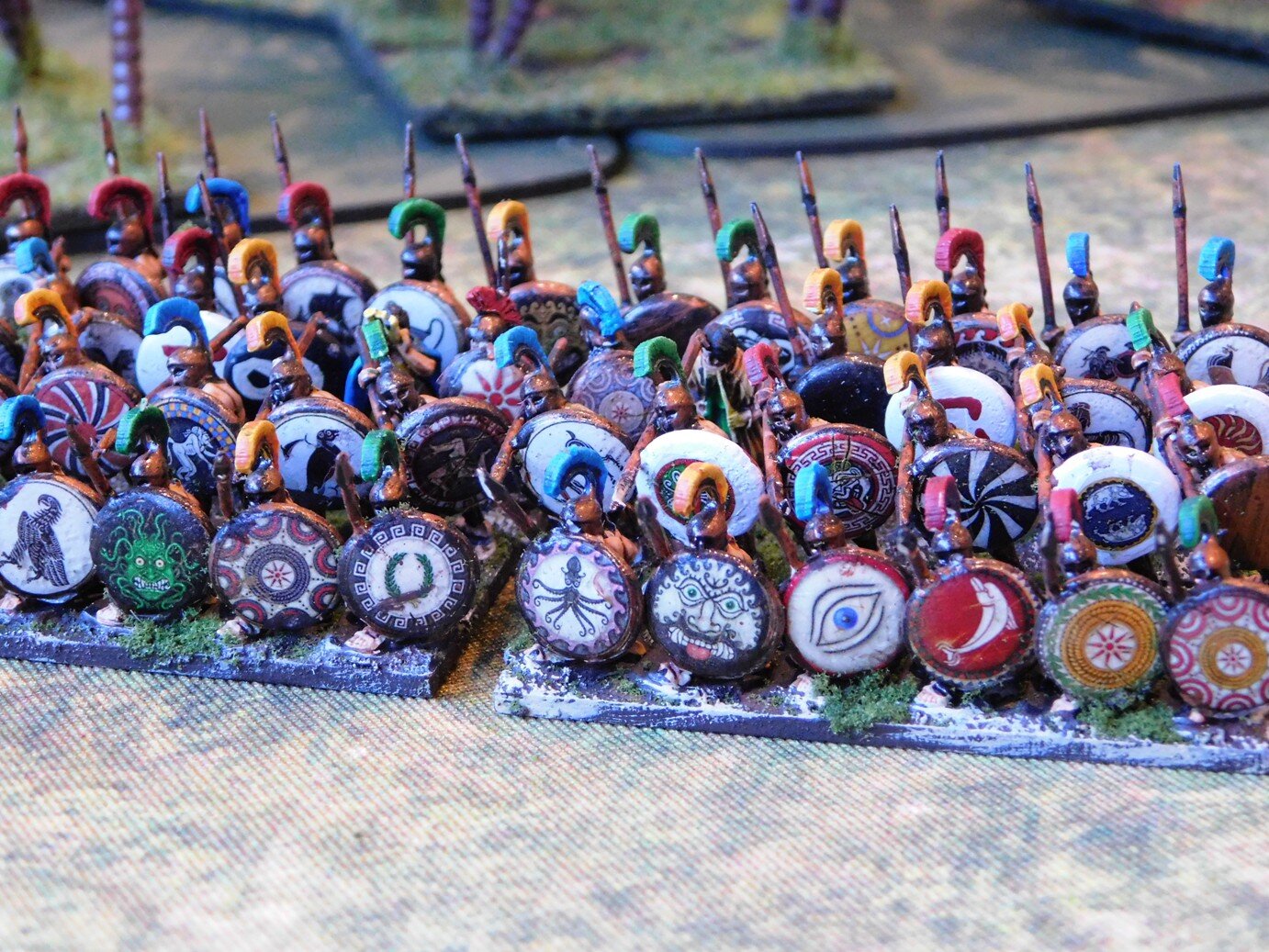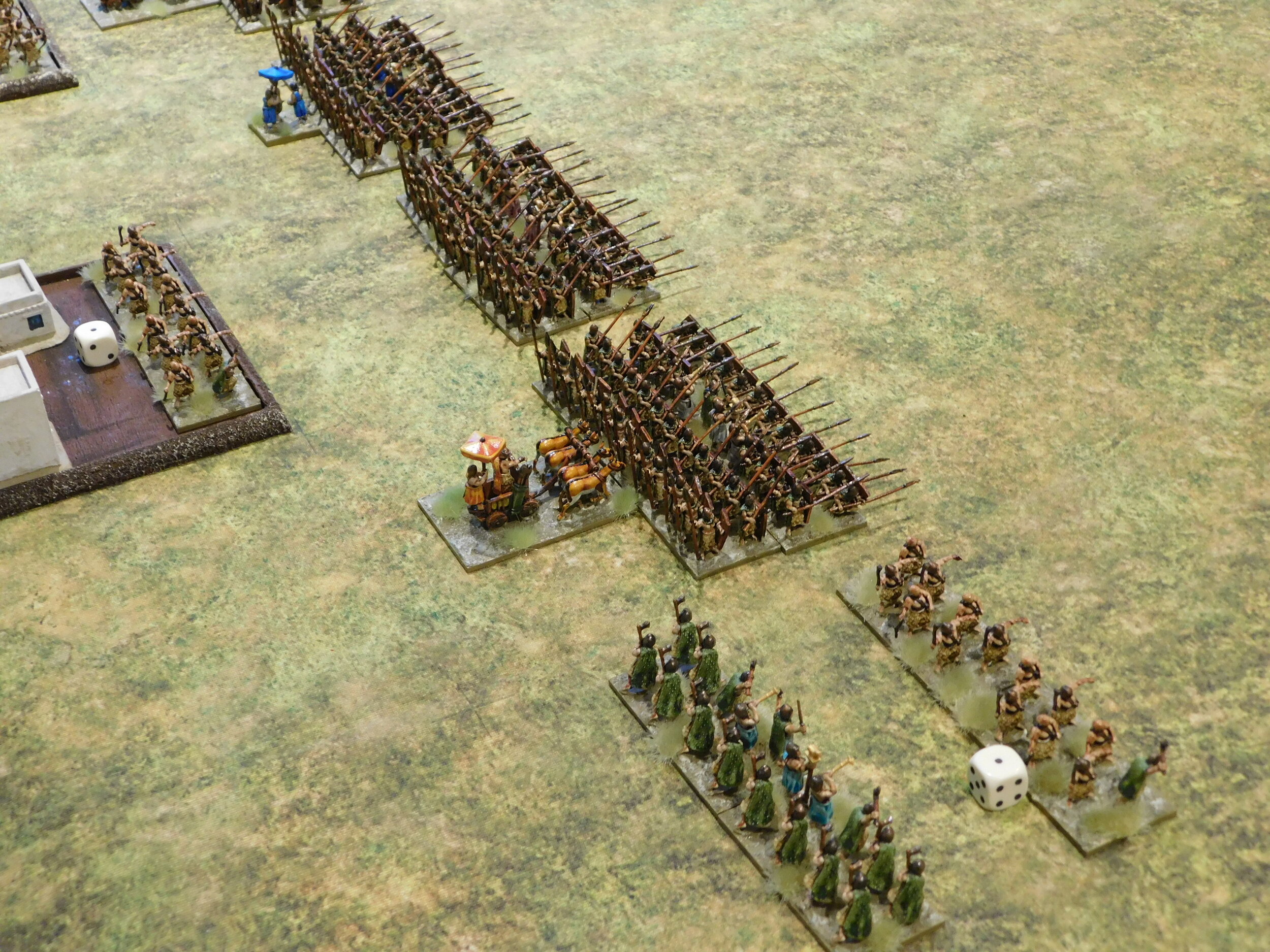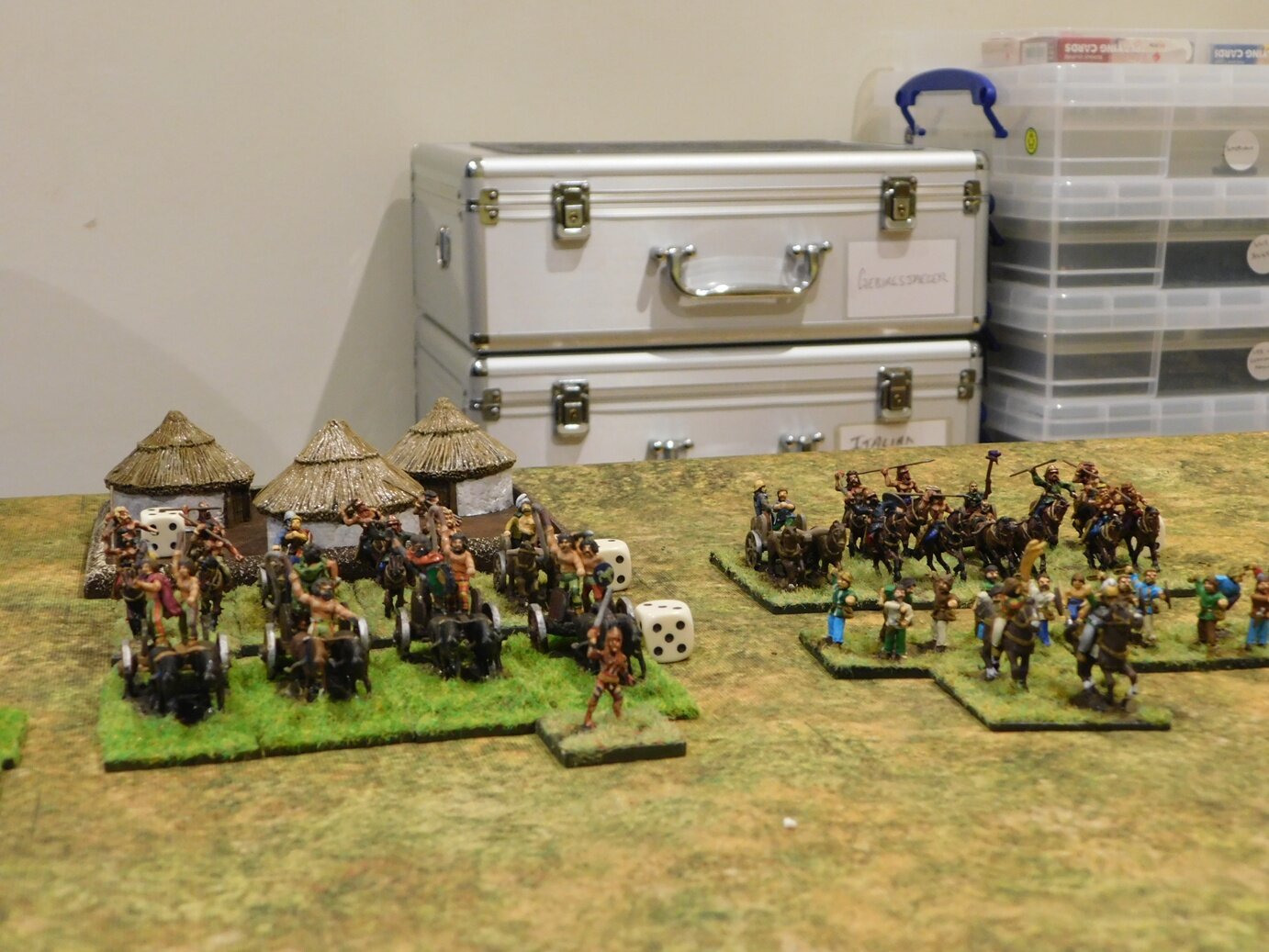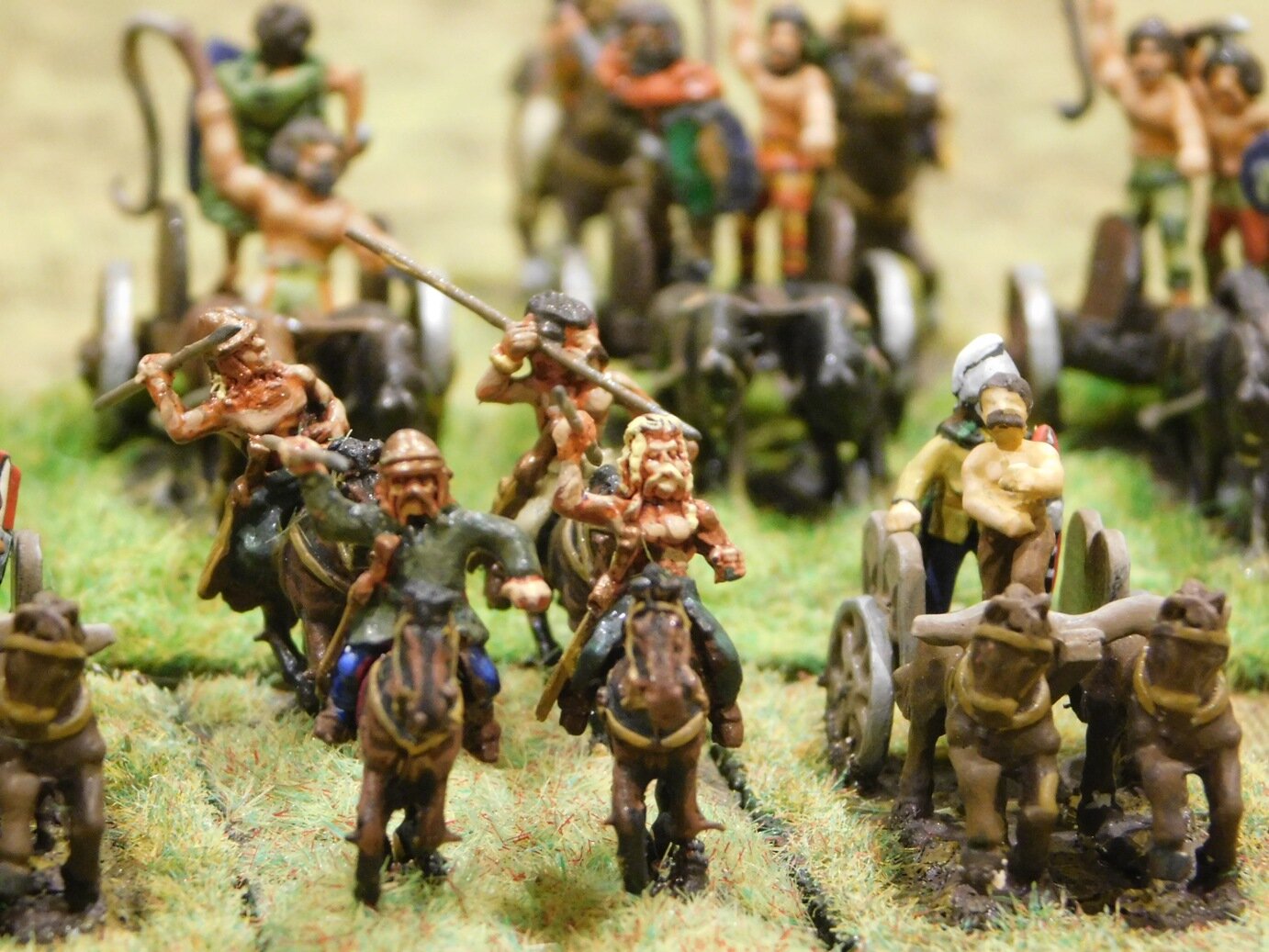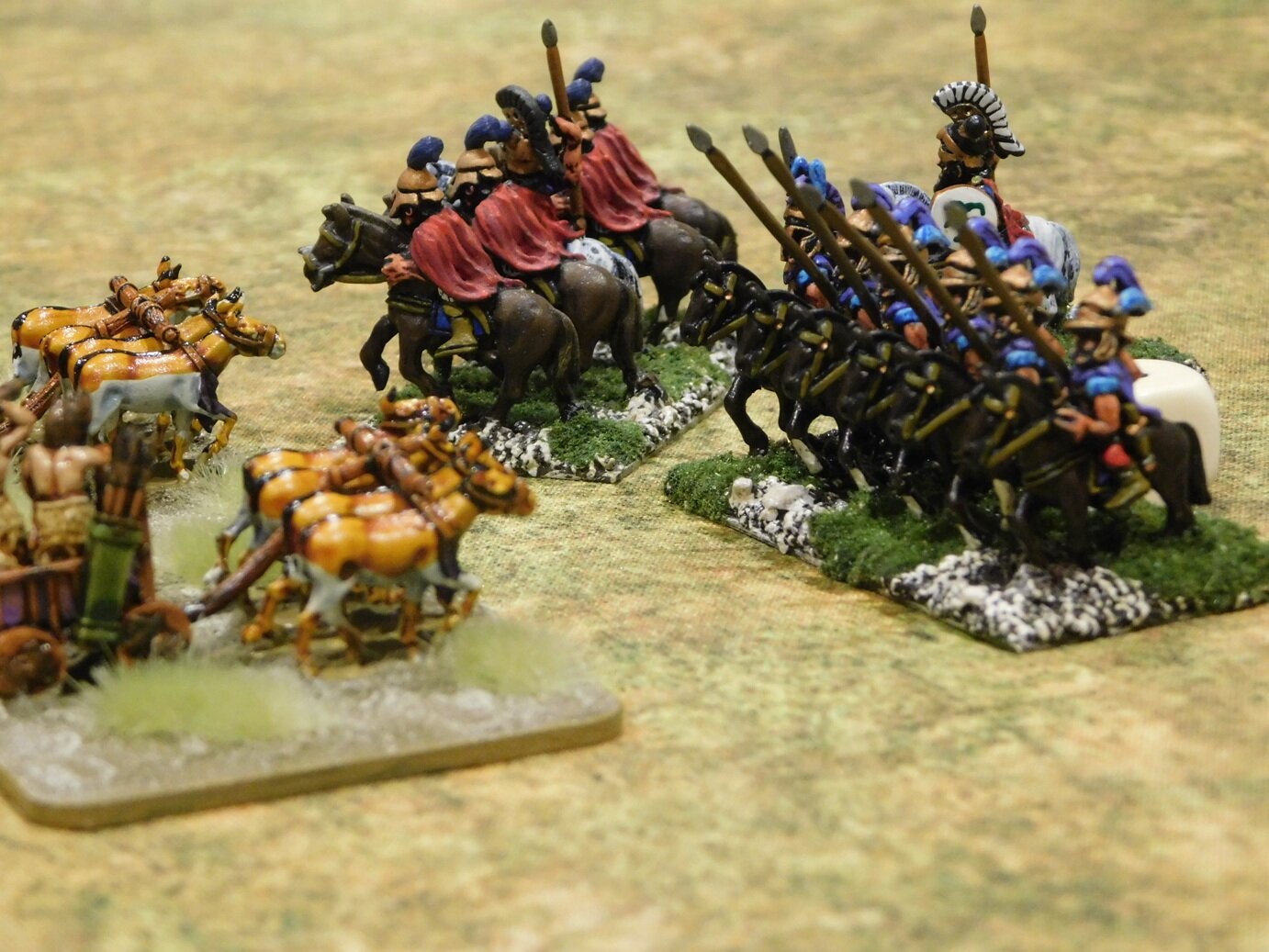More Romans
/Just a couple of pieces today. First up is the Legatus Legionis or commander of the Legion: just a simple command base for my TTS Marian Romans. Figures are Baueda 15mm sourced from Magister Militum.
What is slightly odd is that with the Baueda Marian Roman cohort command, the chap holding the standard (the Aquilifer) is dressed in a lion skin and the signaller (the cornicen) is wearing a wolf skin, whereas here, for the legion command, it’s the other way around.
Next up is a Baueda Semi-Permanent Legionary Marching Fort that I will use as a TTS camp. Now this model was quite complicated to put together well, and I have a horrible feeling that the Primus Pilus would take one look and order the thing taken down and put up again.
The gates are particularly wonky, mainly because after I’d built it I realised that I had stuck the gates on upside down! This gave me a huge gap at the bottom of the gates (plenty of room for a barbarian to crawl through) which I then had to fill with Hama Beads!
But it is a lovely model, and I’m going to get the somewhat smaller Marching Camp as well.






